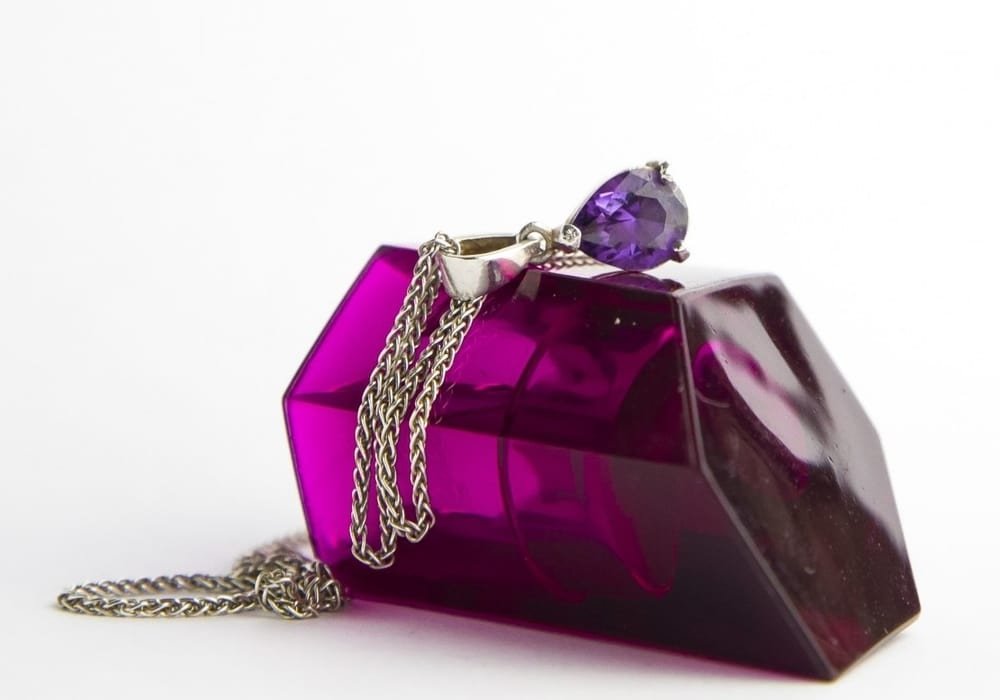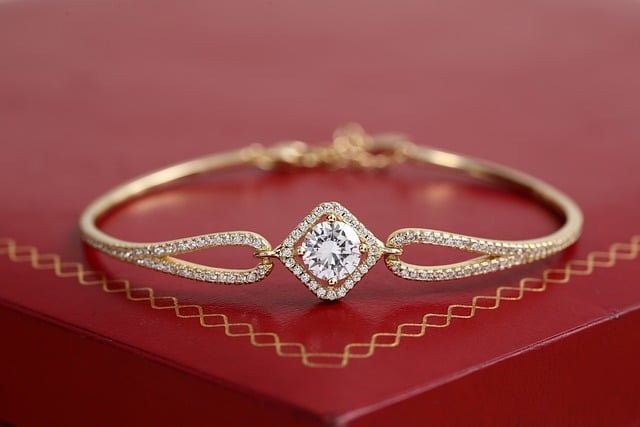Amethyst Stone
Amethyst is related to wisdom, humility, honor and authority. Considered a sacred stone, this gem was used to adorn Egyptian burials, crowns of Christian kings and episcopal rings. She still adorns the jewels of the British royal crown to this day. Excellent for meditation, this natural stone brings clarity of mind and promotes concentration. Amethyst stone helps dispel negative emotions, in this case anger and anxieties. Amethyst promotes both intellectual and sentimental balance. It allows you to find a peaceful and recovering sleep. In Western astrology, it is associated with the signs Aquarius, Virgo, Sagittarius and Pisces.
Amethyst has been known and used in jewelry from ancient times to the present day, from the pharaohs to the bishops’ rings to the British royal crown! Its purple color has always associated with power and nobility.
The Origine of Amethyst Stone
The origin of the name from the Greek ἀμέθυστος (amethystos), “counteracting the intoxication”, expresses the old belief that a wearer of amethyst is immune to the intoxicating effects of wine. Likewise, wine made from an amethyst goblet shouldn’t make you drunk. Originally this (but) belief arose from the custom of diluting (red) wine with water, which then took on a reddish-purple (amethyst-colored) color. At the same time, you could drink a lot more of it without getting drunk or even suffering a hangover.
Another variant of the naming is that Bacchus, the god of wine, frightened a young girl so that she froze to crystal. At this the god sighed, and when his breath touched the stone, he colored it purple like the color of wine.
Read also: Birthstone | What stone is associated with my date of birth and astrological sign?
The amethyst was also said to have an apotropaic effect against theft. This fact is proven by prehistoric grave finds. Merovingian graves with amethyst show, if at all, traces of robbery not in the area where the stones were laid (necklace), even if gold pendants were also to be found here. Possibly in this epoch of early history there was a further (and today no longer reconstructable) said (negative) effect of the amethyst on the thief.

The silicates are the most abundant and chemically complex group of minerals. All silicates have silica as the basis for their chemistry. “Silica” refers to SiO2 chemistry. The fundamental molecular unit of silica is one small silicon atom surrounded by four large oxygen atoms in the shape of a triangular pyramid – this is the silica tetrahedron – SiO4. Each oxygen atom is shared by two silicon atoms, so only half of the four oxygens “belong” to each silicon. The resulting formula for silica is thus SiO2, not SiO4.
The simplest & most abundant silicate mineral in the Earth’s crust is quartz (SiO2). All other silicates have silica + impurities. Many silicates have a significant percentage of aluminum (the aluminosilicates).
Quartz (silicon dioxide/silica – SiO2) is the most common mineral in the Earth’s crust. It is composed of the two most abundant elements in the crust – oxygen and silicon. It has a glassy, nonmetallic luster, is commonly clearish to whitish to grayish in color, has a white streak, is quite hard (H≡7), forms hexagonal crystals, has no cleavage, and has conchoidal fracture. Quartz can be any color: clear, white, gray, black, brown, pink, red, purple, blue, green, orange, etc.
Purple quartz is called amethyst. The coloring agent for amethyst is not agreed upon. Some workers say that it is due to Fe+4 impurity, some say the impurity is Fe+3, and others say it is Mn. Photo credit: James St. John / Flickr, Wikimedia Commons
Healing Power
Amethyst stone against stress and insomnia
Amethyst is found in several places around the world: Americas, Africa, Europe and Russia. In time, this stone was used to fight against drunkenness and excess.
Nowadays, amethyst is used to soothe everyday stresses and limit insomnia. Effectively, by working with the third eye chakra, amethyst helps your body relax. Thus, it is a good muscle relaxer and a natural remedy for relaxation.
In addition, it also allows the rapid evacuation of toxins present in your body. Some even prepare concoctions, amethyst elixirs to fight addictions.
Amethyst is a powerful and protective stone. It guards against psychic attack, transmuting the energy into love and protecting the wearer from all types of harm, including geopathic or electromagnetic stress and ill wishes from others. Amethyst is a natural tranquiliser, it relieves stress and strain, soothes irritability, balances mood swings, dispels anger, rage, fear and anxiety. Alleviates sadness and grief, and dissolves negativity. Amethyst activates spiritual awareness, opens intuition and enhances psychic abilities. It has strong healing and cleansing powers. Amethyst encourages sobriety, having a sobering effect on overindulgence of alcohol, drugs or other addictions. It calms and stimulates the mind, helping you become more focused, enhancing memory and improving motivation. Amethyst assists in remembering and understanding dreams. It relieves insomnia. Encourages selflessness and spiritual wisdom.
Amethyst boosts hormone production, tunes the endocrine system and metabolism. It strengthens the immune system, reduces pain and strengthens the body to fight against cancer. It destroys malignant tumours and aids in tissue regeneration. Cleanses the blood. Relieves physical, emotional and psychological pain or stress. Amethyst eases headaches and releases tension. It reduces bruising, swellings, injuries, and treats hearing disorders. Amethyst heals diseases of the lungs and respiratory tract, skin conditions, cellular disorders and diseases of the digestive tract.
Property :
It takes its name from a Greek legend. Its color would come from the wine spilled by Dionysos on a crystal. Composed of the private “a” and “methystos” (same root as methanol, the alcohol molecule), this stone is believed to protect against drunkenness. More generally, it calms nervousness, stress and dispels anxiety and anger. It therefore promotes nervous and emotional, intellectual and sentimental balance, and provides peaceful sleep.
Zodiac signs :
It is traditionally the stone of the virgins, Sagittarius, Aquarius and Pisces.
Chakras:
It is naturally associated with the 7th chakra, that of the mind, whose color it shares. It allows you to open it up and connect with the divine.
HISTORY OF THE AMETHYST
Originally used as an ornamental stone, the amethyst stone was previously mined for decorative purposes by the Etruscans and the Egyptians. It was also used during the 18th century to make staples and brooches. Today, amethyst is still considered a precious stone, which has earned it in the past its prominence on many precious goods (British crown, Egyptian crown, Russian crown, etc.). Due to its color and the beauty of its shine, it is still one of the most popular stones.
In the biblical register, amethyst holds all its importance. Its main symbol has always been the encouragement of celibacy and piety. It is also not uncommon to find it on the ornaments of the clergy in the Middle Ages. It was frequently found on relics, on bishops’ rings and on priestly vestments. Several examples illustrate this admiration for amethyst among Christians. For example, Joseph gave Mary a ring set with an amethyst. Valentine’s Day, the original priest of the feast of lovers, wore a pendant set with an amethyst around his neck. And finally, the bishops of the Vatican wore a ring with an amethyst as a symbol of their dedication to the church. The place of this stone is just as sacred in the Buddhist religion and appears regularly in the design of rosaries, a variety of amethyst necklaces accompanied by an amethyst pendant.
A little later, during the Renaissance, it was none other than Leonardo da Vinci who praised the benefits of amethyst. Thanks to the precious notes he left in his notebooks, we know that he used this purple mineral to increase his intelligence, his ability to concentrate and his creativity, but also to drive negative thoughts from his mind.
ORIGIN AND COMPOSITION OF AMETHYST STONE
Discovered in very large quantities at the beginning of the 20th century, amethyst is considered to be a very recent stone. Its main deposits were originally discovered in Uruguay and Brazil. From now on, this stone is also extracted and exploited in African, South American, American, Russian and Australian countries. Although the greatest amount of amethyst comes from South American countries, the specificity that can be noted in African countries is that it is much richer in color. In Australia, the stone is shown to be much smaller and much darker. In amethyst deposits, it is not uncommon to find its cousin, citrine. When amethyst and citrine blend together, the result is a sublime ametrine stone with vibrant hints of yellow and purple.
Amethyst is a member of the purple quartz family, which are stones made up of silicon dioxide. On the Mohs scale, its hardness is 7 and its density is around 2.6. This stone varies between sheer and translucent, between a purplish and purple hue, which is mainly due to the iron impurities that can be found in its lens. The color variations that can be found for this stone can range from purple, to bluish and light purple. It is possible to find more purple tones depending on the extraction location. The same amethyst stone can and often does offer different color intensities, presenting an alloy of blue, purple and pink. Up to 250 ° C, the color of this stone is perfectly intact. From 500 ° C, its color changes to become light yellow.
It is quite common for amethysts to be heated at high temperature to modify, intensify and fix their color. So-called “natural” amethysts are those that have not undergone any change in temperature. Robust and powerful, amethyst is not afraid of human modifications. As such, it is very popular in the world of jewelry because it opens the field of possibilities in terms of jewelry and artistic creations.
Most minerals are categorized based on their weight and hardness. In contrast, the value of amethyst lies in its color. This is the reason why men try to modify it with heat, to make its purple color lighter or more intense. The rarest, and therefore the most expensive, are the most transparent. By letting more light pass, the clearest amethysts offer exceptional reflections, oscillating between pink, blue and red.
Amethysts are stones of magmatic origin. They are found in centimetric geodes, in basaltic rocks and in plutonic rocks such as granite. Today its main deposits are in Europe, Russia and India, but the most spectacular are in Madagaskar, in Zambia, Brazil and Uruguay.
VIRTUES AND PROPERTIES OF AMETHYST IN LITHOTHERAPY
MENTAL VIRTUES AND PROPERTIES OF AMETHYST
In lithotherapy, amethyst is considered the stone of humility and the stone of wisdom. It stimulates creativity, imagination and clarity. This stone plays a big role and promotes not only meditation, concentration, but also spiritual elevation. It also takes care of allaying anger, fear, worries, anxieties, sadness and grief.
The amethyst also has the property in lithotherapy of being a stone of passage and of being a stone that includes separation. It can be used in the event of the loss of a loved one, both for the one who leaves and for the one who remains. A remarkable property and virtue of amethyst is that it purifies places and objects, whether through an amethyst ball or in another form. It purifies the physical body, but also the aura. It accepts and integrates perfectly the novelties, the changes. It is also used to cleanse, purify and recharge other stones and minerals. The ideal is to carry out this purification on an amethyst carpet or an amethyst geode.
Also as part of a purification of a place, amethyst contributes in lithotherapy to peace and relaxation. It helps to provide calm and deep relaxation if it is in a bedroom. If it is in your living room, this stone will be able to increase the energy rate of the room in question. If you prefer an amethyst bracelet, it will accompany you and offer you all the virtues that amethyst offers. You will take full advantage of the calming and calming properties it provides throughout the day as soon as you wear it.
PHYSICAL VIRTUES AND PROPERTIES OF AMETHYST
On a physical level, the relaxing energy of amethyst helps relieve high blood pressure and muscle pain. It is particularly effective in releasing tension in the upper back, neck and shoulders. By rebalancing the body, it allows you to find calm before sleeping. So you can put it on your bedside table or under your pillow for a deep, restful sleep, but also for sweet dreams. Its gentle and comforting vibrations can be suitable for adults, children and even animals.
In addition to calming hyperactivity, amethyst is a stone that protects memory, the heart and the respiratory tract. During convalescence, it accelerates the healing and healing process. It can help relieve headaches and fight all forms of addiction. In fact, it is highly recommended to facilitate the elimination of toxins from the body.
Ideal for women, amethyst stimulates fertility, hormone production and the endocrine glands. This feminine stone also promotes the harmonization of menstrual cycles. In the world of lithotherapy, amethyst is considered a stone of appeasement par excellence. One thing is certain; this pleasant feeling of well-being will only have positive repercussions on your body and your mind.
SPIRITUAL VIRTUES AND PROPERTIES OF AMETHYST STONE
Spiritually, amethyst is associated with the seventh chakra, also called the crown chakra. Center of wisdom and knowledge, the crown chakra allows you to open your mind and access a whole new level of spiritual awareness. Thus, wearing an amethyst allows you to acquire new knowledge and to break down all mental barriers. Thanks to this powerful purple stone, your mind calms, your fears dissipate and positive thoughts flourish.
Usually, it is your earthly attachments that block the crown chakra. If you tend to be too down-to-earth and can’t let go, keeping an amethyst near you can help you step back, clear your mind, and listen to that little inner voice that you feel. daily guide; it’s all about your intuition, and many times it’s right. By opening the crown chakra, amethyst allows you to rediscover the inspiration, creativity, imagination and innovative spirit that lie dormant within you.
WHAT ARE THE STONES AND MATERIALS THAT GO PERFECTLY WITH AMETHYST?
From a purely aesthetic point of view, clear and luminous materials such as silver, white gold and white gold are perfect for highlighting the violet notes of amethyst. Combined with yellow gold or rose gold, amethyst takes on a more original, jovial and solar dimension. Associated with a black jewel or a black stone, it inspires magic and mystery. No matter what jewelry they are mounted on, minerals transmit
energies that act directly on your body and mind. And all the energies are not always compatible with each other.
If their energies are too opposite, you may not be able to explore all of their benefits. In this case, amethyst blends perfectly with all stones that have great spiritual power. For example: moonstone, kunzite, labradorite, or rock crystal. On the other hand, you should absolutely avoid associating amethyst with turquoise, malachite, black tourmaline or tiger eye. On the one hand, these stones tend to absorb the energy of others and make them inactive. On the other hand, their energizing energy may overwhelm the calming energy of amethyst.
HOW TO MAINTAIN AND PRESERVE AMETHYST?
With use, the energy of amethyst runs out of steam. To remedy this problem and continue to enjoy its benefits, it is enough to maintain it well. The first step is to regularly clean your amethyst to eliminate negative energies, but also to preserve its natural glow. You can clean your amethyst stone with spring water, salt, earth, or incense. The easiest solution is to leave your stone in a container of lightly salted demineralized water for a few hours. Avoid tap water which could damage it prematurely. Regarding reloading, you can place your amethyst under the light of the moon, preferably on a cluster of quartz.
This recharging process allows you to regain all the good energies and powers of amethyst. Avoid direct sunlight which may alter its color. Amethyst is a resistant stone that benefits from a good longevity. Nevertheless, you should keep in mind that this is a stone sensitive to strong lights and high temperatures. If you take care of it, your amethyst will accompany you for many years.
SYMBOLIC OF AMETHYST STONE
Wisdom and strength
AMETHYST TRADITIONS
Buddhism: Stone of spiritual development
Catholicism: Bishop’s Peter
Celtism: Druid’s Stone
India: Stone of the Brahmin
Amethyst wedding: 48 years of marriage
Gemstones and Healing Stones Meanings
Meaning of Stone | The Healing Stones and Crystals | Healing Properties, Benefits and Powers
Sources: PinterPandai, Charms of Light, My Crystals
Photo credit (main photo): Pxhere



